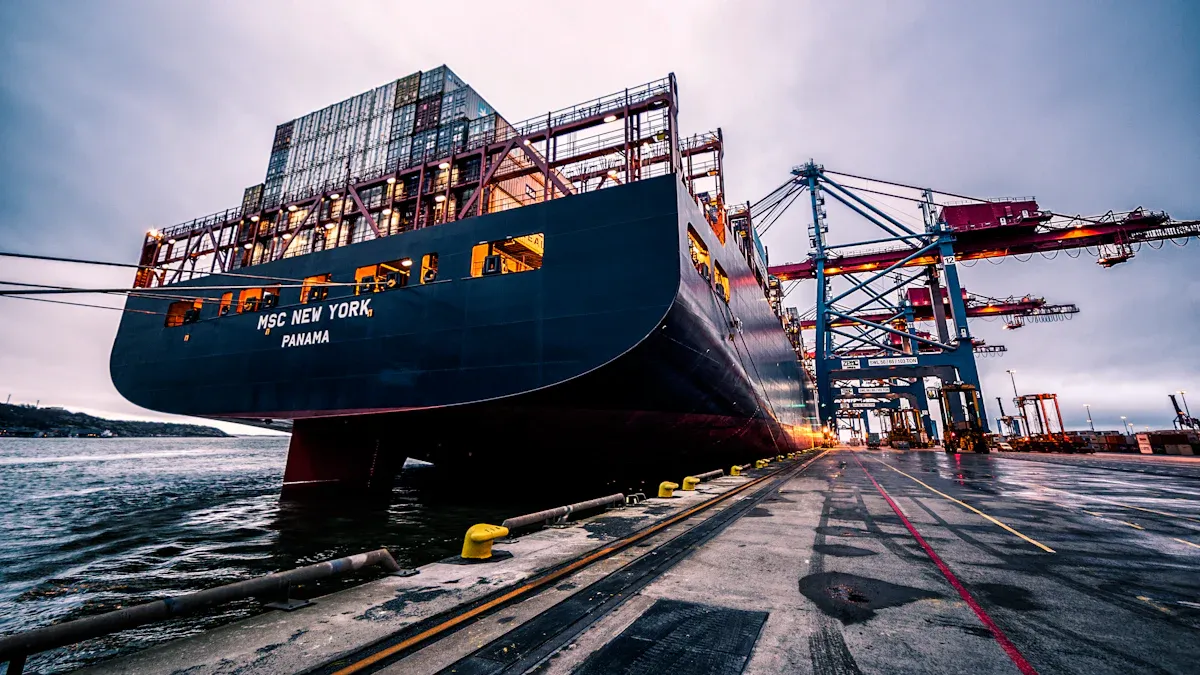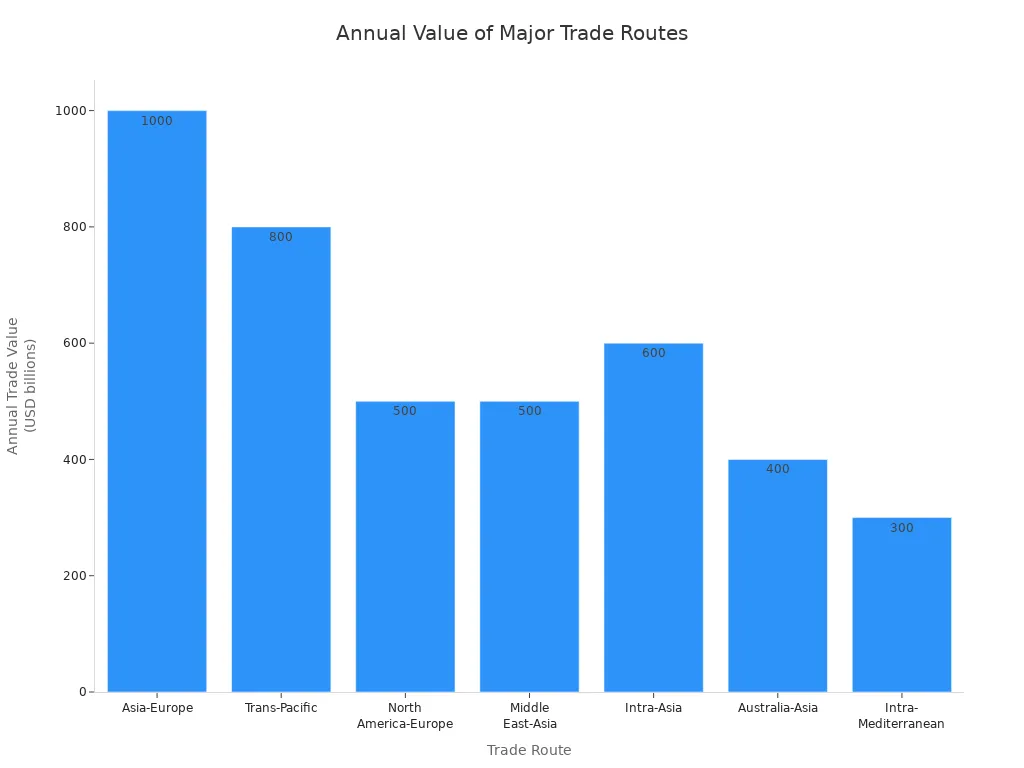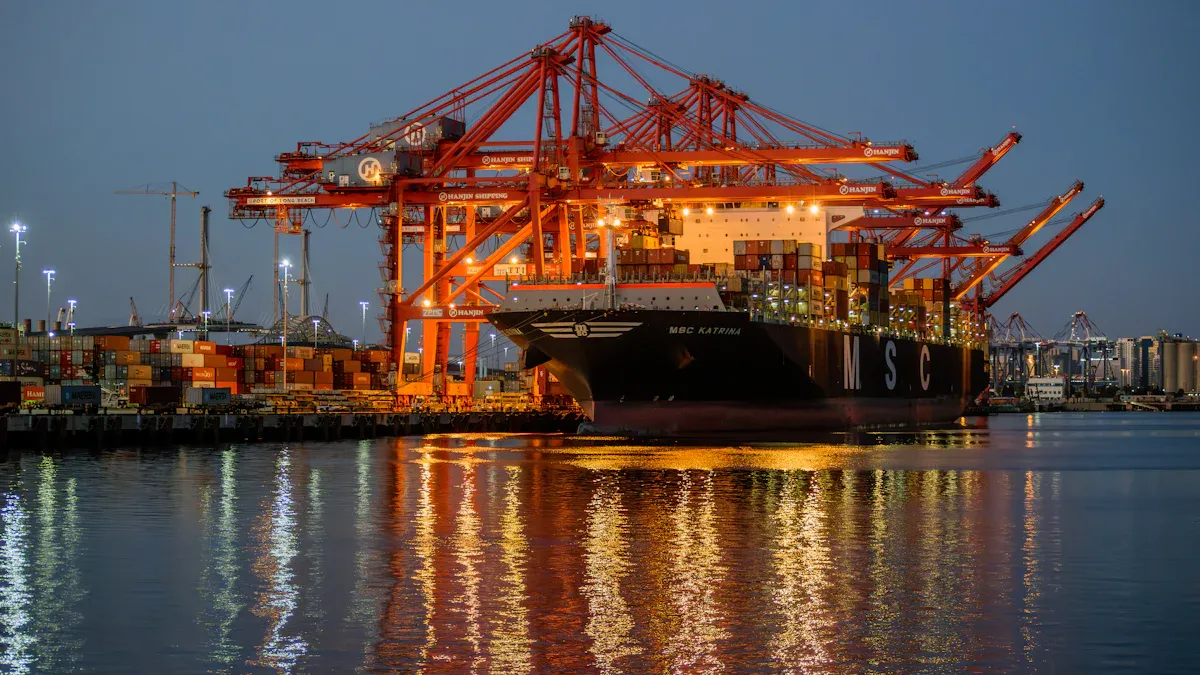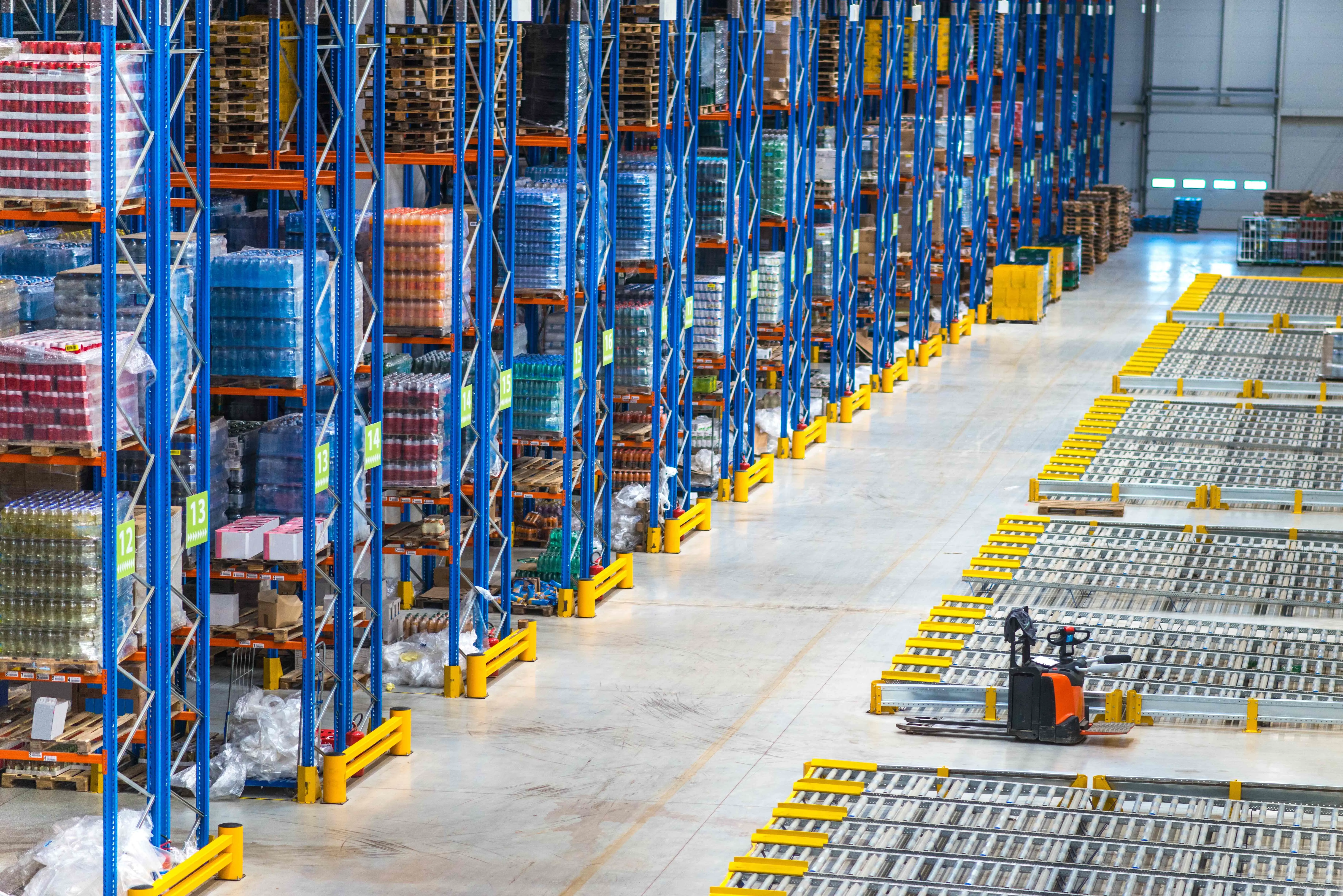Breaking Down the Factors That Impact International Logistics Cost

Many things affect how much international freight logistics cost.
Technology and rules change how much things cost.
E-commerce makes people want faster and better solutions.
Outsourcing and working with partners can lower costs.
You must know these things to make good choices and do better in your work. JUSDA has experts and smart solutions to help you stay ahead.
Key Takeaways
Picking the best way and path to move goods saves money and makes delivery faster. Shipment size, weight, and where it starts change the cost, so plan well and follow local laws. Using technology and good partners like JUSDA helps keep costs low and makes logistics better.
Logistics Cost Drivers

Knowing what makes logistics cost more helps you make smart choices. There are a few main things that change how much you pay for international freight. These are how you move your goods, how far they travel, the route, the size and weight, and where they start and finish. Industry data shows that transportation, warehousing, inventory holding, and order processing all add to your total costs. You can use a freight calculator or a freight quote calculator to guess these costs before you ship.
Transportation Modes
How you move your goods changes the cost a lot. Each way—air, sea, rail, or road—has its own good and bad points:
Air freight is the fastest but costs the most. It is good for things you need quickly or that are worth a lot.
Sea freight is cheapest for big, heavy loads. It takes longer and can be delayed by weather.
Rail freight, like JUSDA’s China-Europe Express Rail, is faster than sea and cheaper than air. It is good for goods that need to move quickly but not too fast.
Road freight is flexible for local deliveries. It can save money for short trips.
Think about what you are shipping, how fast you need it, and your budget. Some things, like electronics or food, may need special care or quick delivery. Intermodal transport uses more than one way to move goods. This can help you pick the best shipping plan and control your logistics cost.
Tip: Picking the right way to ship can help you avoid extra costs like more insurance or special boxes.
Distance and Routes
How far your goods travel changes the cost. Longer trips usually cost more because of fuel, driver time, and wear on vehicles. But the cost per mile can go down for longer trips because of economies of scale. The route you pick also matters. Some routes are better and faster, but others have problems like busy ports, bad weather, or political trouble.
Here is a table with some common trade routes and what changes their costs:
Trade Route | Main Ports | Main Goods | Distance (nautical miles) | Key Cost Drivers | Challenges | Annual Trade Value |
|---|---|---|---|---|---|---|
Asia-Europe | Shanghai, Singapore, Rotterdam, Hamburg | Electronics, textiles, machinery | ~12,000 | High cargo volume, efficient ports | Port congestion, Suez Canal risks | Over $1 trillion |
Trans-Pacific | Los Angeles, Long Beach, Shanghai, Busan | Electronics, autos, furniture | 6,000-7,000 | Strong demand, large ports | Labor strikes, fuel costs | Over $800 billion |
North America-Europe | New York, Antwerp, Hamburg | Pharma, machinery, luxury vehicles | ~3,500 | Advanced ports, minimal tariffs | Weather, energy costs | Over $500 billion |
Middle East-Asia | Ras Tanura, Mumbai, Shanghai | Oil, LNG, petrochemicals | 3,000-5,000 | High demand, strategic chokepoints | Geopolitical tensions, piracy | Over $500 billion |
Intra-Asia | Singapore, Hong Kong, Busan, Tokyo | Electronics, machinery, textiles | 500-2,500 | Regional trade density | Weather, regulations | Over $600 billion |

When you plan shipments, think about the distance, the route, and how good the ports are. Good ports and economies of scale can lower your freight rates. Delays or problems can make your logistics cost go up.
Shipment Size and Weight
The size and weight of your shipment matter a lot for cost. Carriers look at both real weight and how much space your shipment takes up. If your shipment is big but light, you may pay for the space, not the weight. For example, a large box that is not heavy can still cost more because it fills up the truck or container.
Small parcel shipping is best for packages under 150 pounds. It is good for small, quick shipments, but each item may cost more.
Bulk shipments, like full truckload (FTL) or full container load (FCL), are better for heavy or big shipments. These usually cost less per item but may take longer and need special care.
Less-than-truckload (LTL) or less-than-container-load (LCL) lets you share space and cost with others. This can save money if you do not have enough for a full load.
You can use a freight calculator to compare shipping options and see how size and weight change your total cost.
Origin and Destination
Where your shipment starts and ends also changes the cost. Each country or region has its own import and export rules. If you do not follow them, you may face delays or extra fees. Some places have better roads, ports, airports, and warehouses. This makes it easier and cheaper to move goods. Other places have bad roads or few transport choices, which can make costs go up.
Regulatory complexity means you need different papers and certificates for each country.
Infrastructure quality changes how fast and safe you can move goods.
Economic factors, like changing freight rates, port fees, and currency changes, can make your costs go up or down each month.
Geopolitical risks, like political trouble or piracy, can mess up routes and raise insurance and security costs.
Some places need special buildings, like cold storage, for goods that spoil.
You should work with partners who know the local rules and can help you avoid mistakes. JUSDA’s global network and experience in import and export can help you handle these problems and keep your logistics cost low.
Other Influences on Logistics Cost
Customs and Duties
Customs duties and tariffs are a big part of logistics cost. These fees include taxes, shipping, and insurance. You need to add them up the right way. If you forget, you might pay more later. You could have customs delays or fines. Your product price might go up. Incoterms tell you who pays these fees. It is important to know your shipping terms. Customs brokers help with paperwork and rules. If customs rules change, costs can go up. You might need new suppliers or wait longer for goods. Always check your goods’ value, where they come from, and their codes to guess duties.
Higher tariffs can make landed costs go up. You may need to change your shipping plan.
More rules mean more forms and higher costs to run your business.
Customs brokers help you skip delays and extra fees.
Fuel and Surcharges
Fuel prices go up and down a lot. When fuel costs rise, shipping gets more expensive. Carriers add fuel surcharges to cover these changes. These surcharges can be 15–30% of your bill. Air freight has the highest surcharges. Rail is not as affected. Carriers change these fees every week or month. This makes it hard to plan your budget. Here is a table with common fuel surcharge rates:
Carrier & Service | Fuel Surcharge Rate (%) |
|---|---|
UPS Domestic Ground | 15.50 |
UPS International Air Import | 27.25 |
FedEx Export (avg) | 24.00–25.50 |
FedEx Import (avg) | 27.75–29.25 |

Service Providers
The service provider you pick changes your freight costs. Some providers are fast and reliable but cost more. Others are cheaper but offer less. Providers handle duties, surcharges, and extra fees in different ways. You should look at their networks, technology, and customer service. Pick providers with good customs and risk management skills. JUSDA is known for its global network and customs knowledge. They help you avoid delays and keep costs low.
Technology Solutions
Technology helps you control logistics cost. AI and data tools can guess demand and find better routes. They can also lower freight rates. JusLink’s AI Solution from JUSDA gives real-time data and smart tips. This helps you plan, avoid delays, and save money. Companies using AI have saved a lot. They deliver faster, keep less extra stock, and make fewer mistakes. With the right tech, you can decide faster and keep costs down.
Managing and Reducing Logistics Cost

Planning and Optimization
You can save money on logistics by planning well. First, set clear goals for your supply chain. Try to lower costs, deliver faster, and keep enough inventory. Pick suppliers you trust and use more than one. This helps you avoid problems if one supplier fails. Use automation and lean methods to manage production. Choose routes that cost less for your freight. Route optimization software finds the best paths and saves fuel. It also helps you use vehicles better and lowers repair costs. Use technology like ERP systems, AI forecasting, and warehouse automation. These tools help you manage your logistics. Always check your progress with KPIs and review your process often. You can use a freight calculator or a freight quote calculator. These tools help you compare shipping choices and plan your budget.
Tip: Put your distribution centers near your customers. This saves money on last-mile delivery and makes shipping faster.
Leveraging JUSDA Solutions
JUSDA gives you tools to control freight and save money. The China-Europe Express Rail is fast and not too expensive. It moves goods quicker than sea freight and costs less than air freight. JusLink’s AI Solution uses real-time data and AI. It helps you pick cheaper routes and avoid delays. The platform does tasks like shipment scheduling and customs paperwork. This cuts down on mistakes and helps you follow rules. With these tools, you can track shipments, guess demand, and make better choices for your business.
Case Study: Sharp
Sharp made its supply chain better by working with JUSDA. The company had high costs and slow deliveries before. After using JUSDA’s solutions, Sharp cut logistics cost by 20%. Labor costs went down by 70%. Order delivery times got 30% better. Sharp used both software and hardware, like JusLink, to manage orders and inventory. The company also planned freight better and picked better routes. This case shows that the right partner and technology can make your supply chain faster and work better.

JUSDA Solutions
To provide you with professional solutions and quotations.
There are many things that change logistics cost in global trade. These include how far goods travel, how big the market is, and what roads or ports are like. If you plan ahead, you can save money. You can do this by picking better routes and using eco-friendly packaging. JUSDA has smart tools and experts to help you lower costs. Check out their services to make your supply chain stronger today.
See Also
Analyzing Financial Benefits Of Optimizing Supply Chain Costs
Transforming Logistics Through Breakthrough Innovations In Supply Chains
Understanding Emerging Trends In Logistics Risk Management
Unlocking Supply Chain Efficiency With Expert Logistics Savings Tips
Addressing Global Challenges In Expanding Supply Chain Networks
